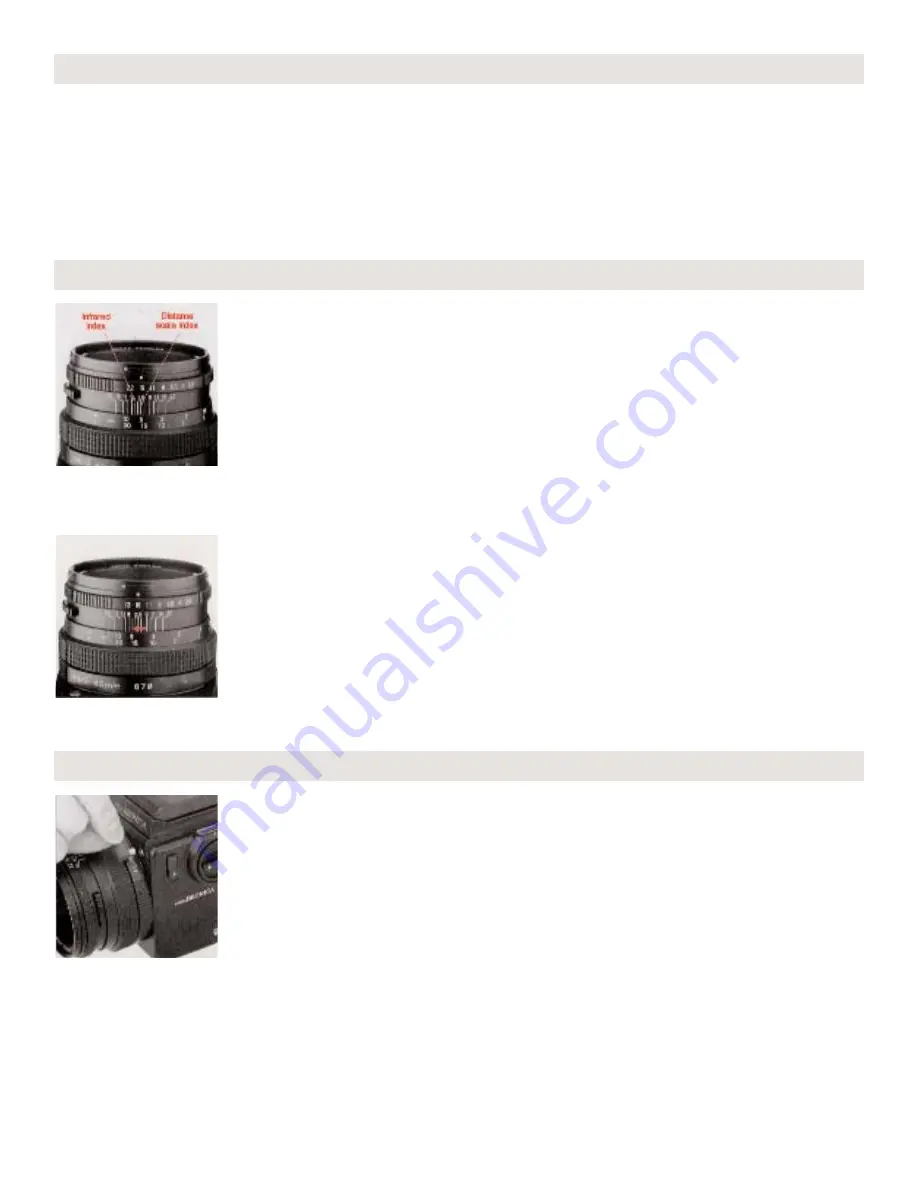
17
These identical pairs of apertures indicate the distance zone in focus at these lens openings.
For example, if the 80mm lens stopped down to f/22, is focused at a distance of 3m (10 ft),
the depth-of-field scale shows that the zone will extend from 2 to 7m (7ft to 23ft) at f/22.
(See the depth-of-field table for the Zenzanon-PS 80mm lens in section 30.)
In infrared photography, some adjustment must be made in the focus
in order to retain sharpness on the film. This is because the invisible
infrared rays are longer in wave length that the visible rays used for
focusing.
For infrared photography:
1. Use an R filter or equivalent with an infrared (black and white) film.
2. The red-colored line, next to the orange-colored distance index, is
the infrared index.
3. After focusing in the normal manner, re-set the distance indicated
by the orange-colored distance index to the infrared index by shifting
the ring.
4. Follow instructions enclosed with the infrared film and filter and to
be on the safe side, make several bracketing shots. In general, more
exposure rather than less seems to be a safe guide.
A. Always use the flash cords with a standard PC type plug. When
detaching the flash cord, grip the plug firmly and pull it out straight.
Do not twist or pull on the cord.
B. The lens shutter of the Zenzanon-S and the PS series lenses have
X-settings for flash synchronization. This allows all the electronic flash
units to synchronize at all shutter speed settings, up to the fastest
1/500 sec. This means that flash fill-in for daylight shots can also be
made very easily.
* For the exposure control in flash photography, please refer to the
instructions of the electronic flash unit and/or flash meter of your
choice.
19. Distance Scale and Depth-of-Field Scale (con’t)
20. Infrared Photography
21. Flash Photography








































